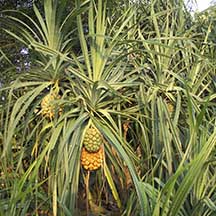Yes, I admit plants aren’t the most impressive living thing around us and there are so many other organisms that are deemed to be cooler/cuter/faster than the non-mobile, green things that we see everywhere. Hence, I do understand when people asked me what is it about plants that fascinated me so much such that I would devote my entire blog talking about plants and their related environmental issues.
I think my interest in plants dated back to the time when we were first exposed to Science, from the moment I learnt that we cannot live without plants, not just because they are our primary producer but also for their vital role in gaseous exchange where they ensure a continuous supply of oxygen in the environment. I mean they straight away stood out from the other organisms didn’t they?
But that’s not all. When I was about 10, my mum decided to hand over the household task of watering the plants to me. I guess that’s when I really developed a liking for the plants (looking at something everyday really do help forge a bond!)
Since then, I have always enjoyed the presence of the trees and plants around me, and would find time to take a walk in a park on my own (when time permits!) Hence, I decided to collaborate with my neighbor (who happens to be a plant-lover as well) to beautify the rubbish chute for my floor. The result turned out better than I thought:
Everytime I head home I will spend some time to look at them and they literally can take anything off my mind.
However, I realised that my knowledge of plant and all the other green things aren’t really that extensive. So when I was asked to write a blog about the environment, I immediately knew what I could write about. Through this blog, I have not just gathered more information about the various topics that were discussed but also learn how to put together relevant information to formulate a coherent argument. Often, researching on the different topics have led me to a more in-depth discovery of other related topics that actually broadened my knowledge beyond what I have expected. Although I have to admit that there were times when I really did not want to write a post, but once I started crafting the few sentences of a post, I often get carried away and end up typing a post for several hours.
In this blog, I have covered the main threat faced by our forest (deforestation) and the reason why deforestation occurs. Then I went on to talk about the benefits that our forests and green spaces have given us. Together, these are attempts to convince people to stop deforestation. However, I know that it is difficult to convince people to completely stop deforesting, hence, I talked about the possibility of sustainable development. Such that people understand that economic development can coincide with protection of the environment so that actions will be taken. Lastly, I shared some of my personal stories with plants to show that building a connection with these green organisms are the same as building a connection with any other living things.
To end off, here’s some pictures that I have taken from my last visit to Gardens by the Bay:
Hopefully they can lift your spirits as much as they can lift mine!
Thank you for reading my blog 🙂












 From the diagram, it is clear that Singapore’s consumption and waste emission levels are far higher than that of Indonesia. While we get to enjoy the high consumption level, Indonesia have to bear with the degradation of their environment and an even higher amount of pollutants in their air. So when we complain about Indonesia’s irresponsible behaviors, are we indirectly calling ourselves irresponsible?
From the diagram, it is clear that Singapore’s consumption and waste emission levels are far higher than that of Indonesia. While we get to enjoy the high consumption level, Indonesia have to bear with the degradation of their environment and an even higher amount of pollutants in their air. So when we complain about Indonesia’s irresponsible behaviors, are we indirectly calling ourselves irresponsible?